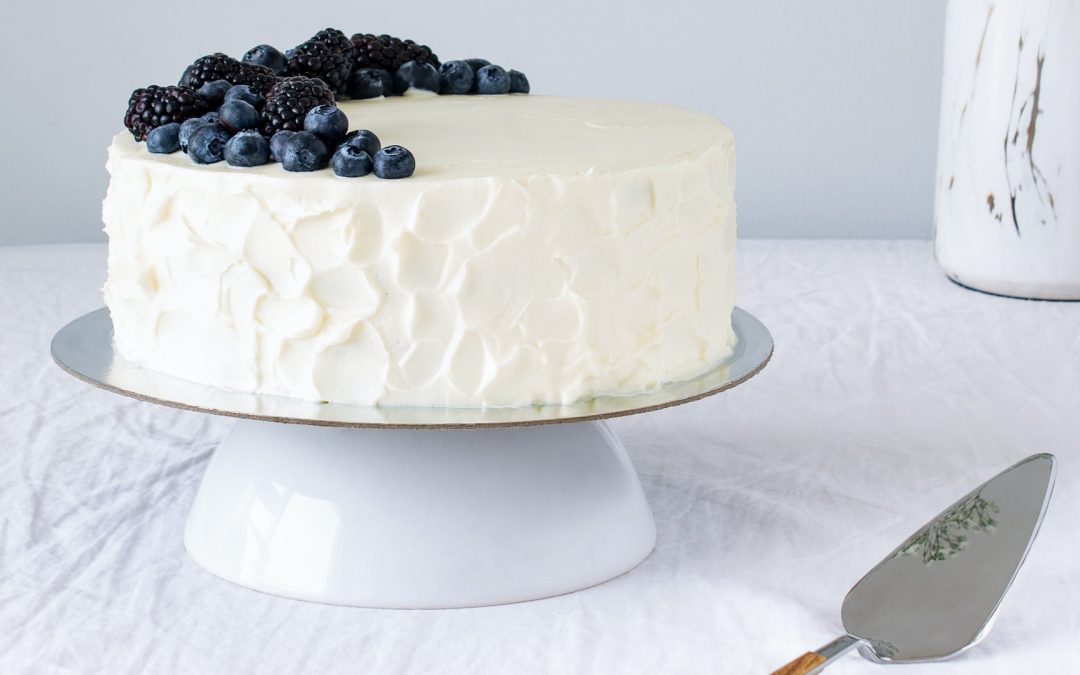White cake, known for its light and delicate texture, holds a special place in the world of baking. Its origins can be traced back to ancient times when refined white flour became more accessible to bakers. White cake gained popularity in the 19th century when refined sugar and baking powder became widely available.
An interesting fact is that white cake was initially a symbol of affluence and social status, as it required expensive ingredients like refined flour and sugar, which were considered luxurious at the time. It was often served at weddings and special occasions as a testament to opulence.
What makes white cake unique is its pure, pristine appearance and versatility. Its neutral flavor provides a blank canvas for various fillings and frostings, allowing for endless customization. Whether it’s paired with fruit fillings, buttercream, or cream cheese frosting, white cake adapts to a wide range of flavor combinations.
Just like yellow cake, white cake is most commonly vanilla flavored but is made without egg yolks. Today, white cake continues to be a beloved classic, appreciated for its lightness and timeless appeal. It remains a popular choice for weddings, celebrations, and everyday indulgence, capturing the hearts of cake enthusiasts around the world.
The Recipe
Ingredients
Ingredients for the Cake Batter:
- 2 3/4 cups all-purpose flour
- 2 1/2 teaspoons baking powder
- 1/2 teaspoon salt
- 1 cup unsalted butter, softened
- 2 cups granulated sugar
- 4 large egg whites
- 1 teaspoon vanilla extract
- 1 1/4 cups whole milk
Ingredients for the White Frosting:
- 1 1/2 cups unsalted butter, softened
- 4 cups powdered sugar
- 1 teaspoon vanilla extract
- 2-3 tablespoons whole milk
Optional Fillings:
- Raspberry jam, lemon curd, or vanilla pastry cream.
Instructions
- Preheat your oven to 350°F (175°C). Grease and flour two 9-inch round cake pans.
- In a medium bowl, whisk together the flour, baking powder, and salt. Set aside.
- In a large mixing bowl, cream together the softened butter and granulated sugar until light and fluffy.
This can be done with an electric mixer or by hand using a whisk. - Add the egg whites one at a time, beating well after each addition. Stir in the vanilla extract.
- Gradually add the dry ingredients to the butter mixture, alternating with the milk.
Begin and end with the dry ingredients, mixing well after each addition. Be careful not to overmix. - Divide the batter evenly between the prepared cake pans. Smooth the tops with a spatula.
- Bake in the preheated oven for 25-30 minutes, or until a toothpick inserted into the center of the cakes comes out clean.
- Remove the cakes from the oven and let them cool in the pans for 10 minutes.
Then transfer them to a wire rack to cool completely. - While the cakes are cooling, prepare the white frosting. In a mixing bowl, beat the softened butter until creamy.
Gradually add the powdered sugar, vanilla extract, and milk, and continue beating until smooth and fluffy. - Once the cakes are completely cooled, place one cake layer on a serving plate.
If desired, spread a layer of filling (such as raspberry jam, lemon curd, or vanilla pastry cream) evenly on top.
Place the second cake layer on top. - Frost the top and sides of the cake with the white frosting, using a spatula or piping bag to create decorative designs.
- Slice and serve the white cake, and enjoy!
Note: Make sure to store the cake in an airtight container at room temperature. It will stay fresh for a few days.
Optional Ingredients
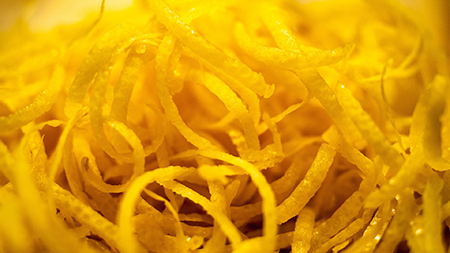

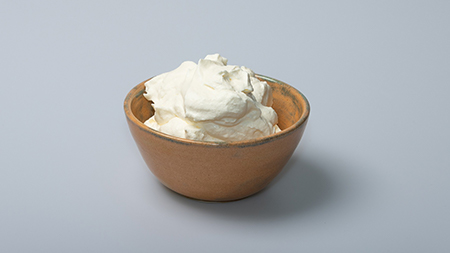
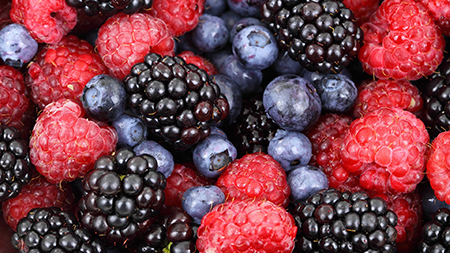
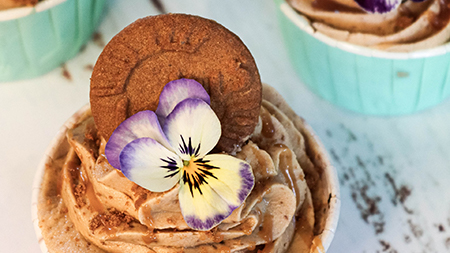
Here are a few additional ingredients that would work well with the white cake recipe:
- Lemon Zest: Add the zest of one lemon to the batter for a hint of bright citrus flavor.
- Almond Extract: Substitute 1/2 teaspoon of the vanilla extract with almond extract to give the cake a subtle almond flavor.
- Coconut Flakes: Fold in 1/2 cup of sweetened coconut flakes into the batter for a touch of tropical taste.
- Chopped Nuts: Add 1/2 cup of chopped nuts, such as walnuts or pecans, to the batter for added crunch and flavor.
- Fresh Berries: Gently fold in 1 cup of fresh berries, such as raspberries or blueberries, into the batter for bursts of fruity goodness.
- Poppy Seeds: Stir in 1 tablespoon of poppy seeds for a unique texture and slight nutty taste.
Feel free to experiment with these ingredients based on your preferences and desired flavor profile. Just be mindful of the proportions and ensure they are well incorporated into the batter before baking. Enjoy!
Plating Recommendations
Here are a few plating recommendations to enhance the presentation of your finished white cake:
- Cake Stand or Platter: Use a beautiful cake stand or platter that complements the style of your cake. Opt for a clean and elegant design that allows the cake to be the focal point.
- Cake Liner or Doily: Place a decorative cake liner or doily on the cake stand before placing the cake on top. This adds a touch of elegance and helps keep the cake stand clean.
- Garnish with Fresh Fruit: Top the cake with fresh fruit slices or berries that complement the flavors of the cake. This not only adds visual appeal but also provides a pop of color and freshness.
- Dust with Powdered Sugar: Sift a light dusting of powdered sugar over the top of the cake just before serving. This adds a touch of elegance and gives the cake a beautiful finishing touch.
- Piping Details: If you’re skilled with piping, you can pipe decorative borders or rosettes along the edges of the cake. Use a contrasting frosting color to create visually appealing patterns.
- Edible Flowers: Consider adding edible flowers as a garnish. Make sure the flowers are safe for consumption and complement the flavors of the cake. Edible flowers can add a delicate and natural touch to the presentation.
Remember to consider the overall theme and style of the occasion when choosing your plating options. Don’t be afraid to get creative and add your personal touch to make the presentation visually appealing and inviting. Enjoy your beautifully plated white cake!
Be sensitive to what food allergies or dietary restrictions your guests might have.
Dairy Free White Cake Recipe
Here’s a modified version of the original white cake recipe to make it dairy-free:
Ingredients for the Cake Batter:
- 2 1/2 cups all-purpose flour
- 2 1/2 teaspoons baking powder
- 1/2 teaspoon salt
- 1 1/2 cups granulated sugar
- 1/2 cup dairy-free margarine, softened
- 1 cup unsweetened almond milk (or any other dairy-free milk alternative)
- 1 teaspoon vanilla extract
- 1/2 teaspoon almond extract
- 4 large eggs
Ingredients for the White Frosting (Dairy-Free):
- 1 cup dairy-free margarine, softened
- 4 cups powdered sugar
- 1 teaspoon vanilla extract
- 2-4 tablespoons unsweetened almond milk (or any other dairy-free milk alternative
Instructions for Baking a Dairy-Free White Cake:
- Preheat your oven to 350°F (175°C). Grease and flour two 9-inch round cake pans or line them with parchment paper.
- In a medium bowl, whisk together the flour, baking powder, and salt. Set aside.
- In a large mixing bowl, cream together the granulated sugar and dairy-free margarine until light and fluffy.
- Add the eggs, one at a time, beating well after each addition. Stir in the vanilla extract and almond extract.
- Gradually add the flour mixture to the wet ingredients, alternating with the almond milk.
Begin and end with the flour mixture, mixing just until combined after each addition. Be careful not to overmix. - Divide the batter evenly between the prepared cake pans and smooth the tops with a spatula.
- Bake in the preheated oven for 25-30 minutes or until a toothpick inserted into the center comes out clean.
- Remove the cakes from the oven and let them cool in the pans for 10 minutes. Then transfer the cakes to a wire rack to cool completely before frosting.
Ingredients for Making the White Frosting (Dairy-Free):
- In a large mixing bowl, beat the dairy-free margarine until creamy.
- Gradually add the powdered sugar, one cup at a time, beating well after each addition.
- Stir in the vanilla extract.
- Add the almond milk, one tablespoon at a time, until you reach your desired consistency. Beat well after each addition.
- Continue beating the frosting on medium-high speed for an additional 2-3 minutes until light and fluffy.
Now you have a delicious dairy-free white cake with a dairy-free white frosting that can be enjoyed by those with dairy restrictions.
Gluten Free White Cake Recipe
Here’s a modified version of the original white cake recipe to make it gluten-free:
Ingredients for the Cake Batter:
- 2 1/2 cups gluten-free all-purpose flour
- 2 1/2 teaspoons baking powder
- 1/2 teaspoon salt
- 1 1/2 cups granulated sugar
- 1/2 cup unsalted butter, softened
- 1 cup milk (dairy or non-dairy alternative)
- 1 teaspoon vanilla extract
- 1/2 teaspoon almond extract
- 4 large egg
Ingredients for the White Cake Frosting (Gluten-Free):
- 1 cup unsalted butter, softened
- 4 cups powdered sugar
- 1 teaspoon vanilla extract
- 2-4 tablespoons milk (dairy or non-dairy alternative)
Instructions for Baking a Gluten-Free White Cake:
- Preheat your oven to 350°F (175°C). Grease and flour two 9-inch round cake pans or line them with parchment paper.
- In a medium bowl, whisk together the gluten-free flour, baking powder, and salt. Set aside.
- In a large mixing bowl, cream together the granulated sugar and softened butter until light and fluffy.
- Add the eggs, one at a time, beating well after each addition. Stir in the vanilla extract and almond extract.
- Gradually add the flour mixture to the wet ingredients, alternating with the milk. Begin and end with the flour mixture, mixing just until combined after each addition. Be careful not to overmix.
- Divide the batter evenly between the prepared cake pans and smooth the tops with a spatula.
- Bake in the preheated oven for 25-30 minutes or until a toothpick inserted into the center comes out clean.
- Remove the cakes from the oven and let them cool in the pans for 10 minutes. Then transfer the cakes to a wire rack to cool completely before frosting.
Instructions for Making Gluten-Free White Frosting:
- In a large mixing bowl, beat the softened butter until creamy.
- Gradually add the powdered sugar, one cup at a time, beating well after each addition.
- Stir in the vanilla extract.
- Add the milk, one tablespoon at a time, until you reach your desired consistency. Beat well after each addition.
- Continue beating the frosting on medium-high speed for an additional 2-3 minutes until light and fluffy.
With these modifications, you can enjoy a delicious gluten-free Lemon cake. Make sure to use a gluten-free all-purpose flour blend that is suitable for your dietary needs. Enjoy your gluten-free baking!
Sugar Free White Cake Recipe
Here’s a modified version of the original white cake recipe to make it sugar-free:
Ingredients for the Cake Batter:
- 2 1/2 cups all-purpose flour
- 2 1/2 teaspoons baking powder
- 1/2 teaspoon salt
- 1 1/2 cups sugar substitute (e.g., erythritol or stevia)
- 1/2 cup unsalted butter, softened
- 1 cup milk (dairy or non-dairy alternative)
- 1 teaspoon vanilla extract
- 1/2 teaspoon almond extract
- 4 large egg
Ingredients for the White Frosting (Sugar-Free):
- 1 cup unsalted butter, softened
- 4 cups powdered sugar substitute (e.g., powdered erythritol or powdered stevia)
- 1 teaspoon vanilla extract
- 2-4 tablespoons milk (dairy or non-dairy alternative)
Instructions for Baking a Sugar-Free White Cake:
- Preheat your oven to 350°F (175°C). Grease and flour two 9-inch round cake pans or line them with parchment paper.
- In a medium bowl, whisk together the all-purpose flour, baking powder, and salt. Set aside.
- In a large mixing bowl, cream together the sugar substitute and softened butter until light and fluffy.
- Add the eggs, one at a time, beating well after each addition. Stir in the vanilla extract and almond extract.
- Gradually add the flour mixture to the wet ingredients, alternating with the milk. Begin and end with the flour mixture, mixing just until combined after each addition. Be careful not to overmix.
- Divide the batter evenly between the prepared cake pans and smooth the tops with a spatula.
- Bake in the preheated oven for 25-30 minutes or until a toothpick inserted into the center comes out clean.
- Remove the cakes from the oven and let them cool in the pans for 10 minutes. Then transfer the cakes to a wire rack to cool completely before frosting.
Instructions for Making the Sugar-Free White Frosting:
- In a large mixing bowl, beat the softened butter until creamy.
- Gradually add the powdered sugar substitute, one cup at a time, beating well after each addition.
- Stir in the vanilla extract.
- Add the milk, one tablespoon at a time, until you reach your desired consistency. Beat well after each addition.
- Continue beating the frosting on medium-high speed for an additional 2-3 minutes until light and fluffy.
Now you have a delicious sugar-free white cake with a sugar-free white frosting that can be enjoyed by those who prefer to limit their sugar intake.
Low-Carb White Cake Recipe
Here’s a modified version of the original white cake recipe to make it low-carb:
Ingredients for the Cake Batter:
- 2 1/2 cups almond flour
- 1/2 cup coconut flour
- 1 1/2 teaspoons baking powder
- 1/2 teaspoon salt
- 1/2 cup unsalted butter, softened
- 1 cup granulated low-carb sweetener (e.g., erythritol or stevia)
- 4 large eggs
- 1 cup unsweetened almond milk (or any low-carb milk alternative)
- 1 teaspoon vanilla extract
- 1/2 teaspoon almond extract
Instructions for Baking a Low-Carb White Cake:
- Preheat your oven to 350°F (175°C). Grease and flour two 9-inch round cake pans or line them with parchment paper.
- In a medium bowl, whisk together the almond flour, coconut flour, baking powder, and salt. Set aside.
- In a large mixing bowl, cream together the softened butter and granulated low-carb sweetener until light and fluffy.
- Add the eggs, one at a time, beating well after each addition. Stir in the vanilla extract and almond extract.
- Gradually add the flour mixture to the wet ingredients, alternating with the unsweetened almond milk.
Begin and end with the flour mixture, mixing just until combined after each addition. Be careful not to overmix. - Divide the batter evenly between the prepared cake pans and smooth the tops with a spatula.
- Bake in the preheated oven for 25-30 minutes or until a toothpick inserted into the center comes out clean.
- Remove the cakes from the oven and let them cool in the pans for 10 minutes.
Then transfer the cakes to a wire rack to cool completely before frosting.
Ingredients for the White Cake Frosting (Low-Carb):
- 1 cup unsalted butter, softened
- 2 cups powdered low-carb sweetener (e.g., powdered erythritol or powdered stevia)
- 1 teaspoon vanilla extract
- 2-4 tablespoons heavy cream (or any low-carb milk alternative)
Instructions for the White Cake Frosting (Low-Carb):
- In a large mixing bowl, beat the softened butter until creamy.
- Gradually add the powdered low-carb sweetener, one cup at a time, beating well after each addition.
- Stir in the vanilla extract.
- Add the heavy cream, one tablespoon at a time, until you reach your desired consistency. Beat well after each addition.
- Continue beating the frosting on medium-high speed for an additional 2-3 minutes until light and fluffy.
Now you have a delicious low-carb white cake with a low-carb white frosting that can be enjoyed while adhering to a low-carb lifestyle.
Vegan White Cake Recipe
Here’s a modified version of the original white cake recipe to make it vegan:
Ingredients for the Cake Batter:
- 2 1/2 cups all-purpose flour
- 1 1/2 teaspoons baking powder
- 1/2 teaspoon baking soda
- 1/2 teaspoon salt
- 1 3/4 cups unsweetened almond milk (or any plant-based milk)
- 2 teaspoons apple cider vinegar
- 1 1/2 cups granulated sugar
- 1/2 cup unsweetened applesauce
- 1/2 cup vegetable oil
- 1 teaspoon vanilla extract
Ingredients for Vegan White Frosting:
- 1 cup vegan margarine or coconut oil, softened
- 4 cups powdered sugar
- 1 teaspoon vanilla extract
- 2-4 tablespoons plant-based milk (e.g., almond milk, soy milk)
Instructions for Baking a Vegan White Cake:
- Preheat your oven to 350°F (175°C). Grease and flour two 9-inch round cake pans or line them with parchment paper.
- In a small bowl, combine the almond milk and apple cider vinegar. Set aside for a few minutes to curdle.
- In a large mixing bowl, whisk together the flour, baking powder, baking soda, and salt.
- In another bowl, whisk together the curdled almond milk mixture, granulated sugar, applesauce, vegetable oil, and vanilla extract until well combined.
- Gradually add the wet ingredients to the dry ingredients, stirring until just combined. Be careful not to overmix.
- Divide the batter evenly between the prepared cake pans and smooth the tops with a spatula.
- Bake in the preheated oven for 25-30 minutes or until a toothpick inserted into the center comes out clean.
- Remove the cakes from the oven and let them cool in the pans for 10 minutes. Then transfer the cakes to a wire rack to cool completely before frosting.
Instructions for Vegan White Frosting:
- In a large mixing bowl, beat the softened vegan margarine or coconut oil until creamy.
- Gradually add the powdered sugar, one cup at a time, beating well after each addition.
- Stir in the vanilla extract.
- Add the plant-based milk, one tablespoon at a time, until you reach your desired consistency. Beat well after each addition.
- Continue beating the frosting on medium-high speed for an additional 2-3 minutes until light and fluffy.
Now you have a delicious vegan white cake with a vegan-friendly white frosting that can be enjoyed by those following a vegan diet.
Keto White Cake Recipe
Here’s a modified version of the original white cake recipe to make it Keto:
Ingredients for the Cake Batter:
- 2 1/2 cups almond flour
- 1/4 cup coconut flour
- 1/4 cup granulated erythritol (or any keto-friendly sweetener)
- 2 teaspoons baking powder
- 1/2 teaspoon salt
- 1/2 cup unsalted butter, melted
- 1/2 cup unsweetened almond milk (or any unsweetened nut milk)
- 4 large eggs
- 1 teaspoon vanilla extract
- 1/2 teaspoon almond extract
Ingredients for Keto White Frosting:
- 1 cup unsalted butter, softened
- 1 cup powdered erythritol (or any keto-friendly powdered sweetener)
- 1 teaspoon vanilla extract
- 2-4 tablespoons heavy cream
Instructions for Baking a Keto White Cake:
- Preheat your oven to 350°F (175°C). Grease and flour two 9-inch round cake pans or line them with parchment paper.
- In a large mixing bowl, whisk together the almond flour, coconut flour, granulated erythritol, baking powder, and salt.
- In a separate bowl, whisk together the melted butter, almond milk, eggs, vanilla extract, and almond extract.
- Gradually add the wet ingredients to the dry ingredients, stirring until just combined. Be careful not to overmix.
- Divide the batter evenly between the prepared cake pans and smooth the tops with a spatula.
- Bake in the preheated oven for 25-30 minutes or until a toothpick inserted into the center comes out clean.
- Remove the cakes from the oven and let them cool in the pans for 10 minutes. Then transfer the cakes to a wire rack to cool completely before frosting.
Instructions for Making Keto White Frosting
- In a large mixing bowl, beat the softened butter until creamy.
- Gradually add the powdered erythritol, one cup at a time, beating well after each addition.
- Stir in the vanilla extract.
- Add the heavy cream, one tablespoon at a time, until you reach your desired consistency. Beat well after each addition.
- Continue beating the frosting on medium-high speed for an additional 2-3 minutes until light and fluffy.
Now you have a delicious Keto white cake with a Keto-friendly white frosting that can be enjoyed as part of a low-carb, high-fat diet.
Here is some general nutrition information for the original white cake recipe up above:
Please note that these values are approximate and can vary based on specific ingredients used and any variations made to the recipe:
(per serving, based on 12 servings)
- Calories: Approximately 345 calories per serving
- Total Fat: Approximately 13g
- Saturated Fat: Approximately 8g
- Cholesterol: Approximately 65mg
- Sodium: Approximately 305mg
- Total Carbohydrates: Approximately 53g
- Dietary Fiber: Approximately 0.5g
- Sugars: Approximately 35g
- Protein: Approximately 4g
(per serving, based on 16 servings)
- Calories: Approximately 259 calories per serving
- Total Fat: Approximately 10g
- Saturated Fat: Approximately 6g
- Cholesterol: Approximately 49mg
- Sodium: Approximately 229mg
- Total Carbohydrates: Approximately 39g
- Dietary Fiber: Approximately 0.4g
- Sugars: Approximately 26g
- Protein: Approximately 3g
Please note that these nutrition values are approximate and can vary depending on the specific ingredients and brands used. Additionally, the frosting and any additional toppings or fillings used in the cake are not accounted for in these calculations.
- Mixing Bowls: Various sizes of mixing bowls are useful for combining ingredients. Opt for heatproof glass or stainless steel bowls.
- Measuring Cups and Spoons: A set of measuring cups (1 cup, 1/2 cup, 1/4 cup, and 1/3 cup) and measuring spoons (1 tablespoon, 1 teaspoon, 1/2 teaspoon, and 1/4 teaspoon) for accurate ingredient measurements.
- Electric Mixer: A stand mixer or handheld electric mixer can make mixing the cake batter and frosting easier and more efficient.
- Whisk: A whisk is handy for blending dry ingredients and ensuring they’re evenly distributed.
- Spatulas: Both rubber spatulas and offset spatulas are useful for scraping down the sides of bowls, folding in ingredients, and smoothing frosting.
- Cake Pans: Two 9-inch round cake pans for baking the cake layers. Opt for non-stick pans or line them with parchment paper for easy removal.
- Cooling Rack: A wire cooling rack allows air to circulate around the cakes, promoting even cooling.
- Piping Bag and Tips: If you want to pipe decorations or borders, a piping bag and assorted tips will come in handy.
- Cake Stand or Serving Plate: Present your cake on a cake stand or a decorative serving plate for an appealing presentation.
- Knife or Cake Leveler: To level the cake layers or trim the tops for an even surface, a serrated knife or a cake leveler is useful.
- Offset Spatula or Palette Knife: Use an offset spatula or a palette knife for applying frosting and achieving a smooth finish.
- Cake Server or Slicing Knife: For serving the cake, have a cake server or a long, serrated knife to cut neat slices.
- Zester: a handy little kitchen utensil for removing fine shreds of zest from lemons, oranges, and limes.
Remember, this is a general list of equipment, and you may already have some of these items in your kitchen. Adapt the list based on your personal preferences and the tools you have available.
Q: Can I use cake flour instead of all-purpose flour in a white cake recipe?
A: Yes, you can use cake flour in a white cake recipe. Cake flour has a lower protein content compared to all-purpose flour, which results in a lighter and more tender texture. It is commonly used in cake recipes to achieve a soft and delicate crumb. If you choose to use cake flour, substitute it in a 1:1 ratio for the all-purpose flour called for in the recipe.
Q: How do I prevent my white cake from sinking in the center?
A: To prevent your white cake from sinking in the center, make sure not to overmix the batter, as overmixing can lead to excess air incorporation and subsequent sinking. Additionally, ensure that your oven is properly preheated and at the correct temperature throughout the baking process. Lastly, avoid opening the oven door too frequently while the cake is baking, as this can cause temperature fluctuations that may affect the cake’s structure.
Q: Why is my white cake dry and crumbly?
A: Several factors can contribute to a dry and crumbly white cake. One common reason is overbaking. It’s important to follow the recommended baking time and periodically check the cake for doneness using a toothpick or cake tester. Overmixing the batter can also result in a dry texture, so mix until just combined. Using too much flour or not enough fat in the recipe can also lead to a dry outcome. Measure your ingredients accurately and ensure you have the correct ratios. Lastly, make sure to store the cake properly, as exposure to air can dry it out.
Q: How can I make my white cake more flavorful?
A: If you’d like to enhance the flavor of your white cake, you can incorporate additional ingredients such as extracts or zests. Vanilla extract is a classic choice, but you can experiment with other extracts like almond, lemon, or orange to add different flavors. Adding lemon or orange zest to the batter can also infuse it with a citrusy aroma. Another option is to incorporate flavored syrups or fillings between the cake layers to add a burst of flavor.
